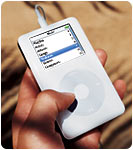In the book section of this site, I’m offering up a sizable chunk of extracts. There’s the foreword by Dave Shea, all of chapter five and of course, there’s the sample website created for the book.
Now I’d like to offer up one more part of the book: the reference section.
As I was writing the book, it became clear fairly quickly that some kind of reference section would be needed. On the one hand, I resisted this because the book is not at all intended as a reference book. On the other hand, I realised it would be valuable for readers to be able to look up commonly used DOM methods and properties. So I wrote a reference section, but it’s in a different style to the rest of the book: a lot more bare-bones and technical compared to the chatty narrative style of the book proper.
I had a tough choice to face when I was putting the reference section together: how should items be arranged? There’s the tried and tested alphabetical order. But, in the end, I decided to arrange entries by methods and properties which were then further subdivided by task, e.g. finding nodes, creating nodes, traversing the node tree.
It was this reference section, more than any other part of the book, that made me realise how constraining a format paper really is. I had to make a decision on how items would be arranged and once it was printed, there would be no way to rearrange them. Not for the first time, I began to wish for hypertext on the printed page.
Well, I’ve taken the reference section and I’ve turned it into a kind of hypertext. It’s not HTML, though. Instead, I’ve created a Podbook.
 The idea for the Podbook is shamelessly ripped off from John Allsopp and the gang at Westciv. They created a fantastic little CSS PodGuide a while back.
The idea for the Podbook is shamelessly ripped off from John Allsopp and the gang at Westciv. They created a fantastic little CSS PodGuide a while back.
Both the DOM Scripting reference section and the CSS PodGuide both make use of the Notes feature in recent iPod models. You can use the iPod’s scroll wheel to navigate through a series of text files. The upshot of this is that you can have the reference section of the DOM Scripting book with you wherever you go.
Now, I don’t know how often you’re going to need to have instant access to DOM methods and properties, but this will give you a way to look up the information wherever you happen to be.
I’ve put together a page containing instructions on how to download and install the Podbook. I hope you like it.
Posted by Jeremy on Sunday, September 11th, 2005 at 8:19pm

Comments
Thanks, this is good stuff. Is this Podbook under any particular license?
# Posted by Chris Griego on Tuesday, September 13th, 2005 at 3:13am



Sorry. Comments are closed.